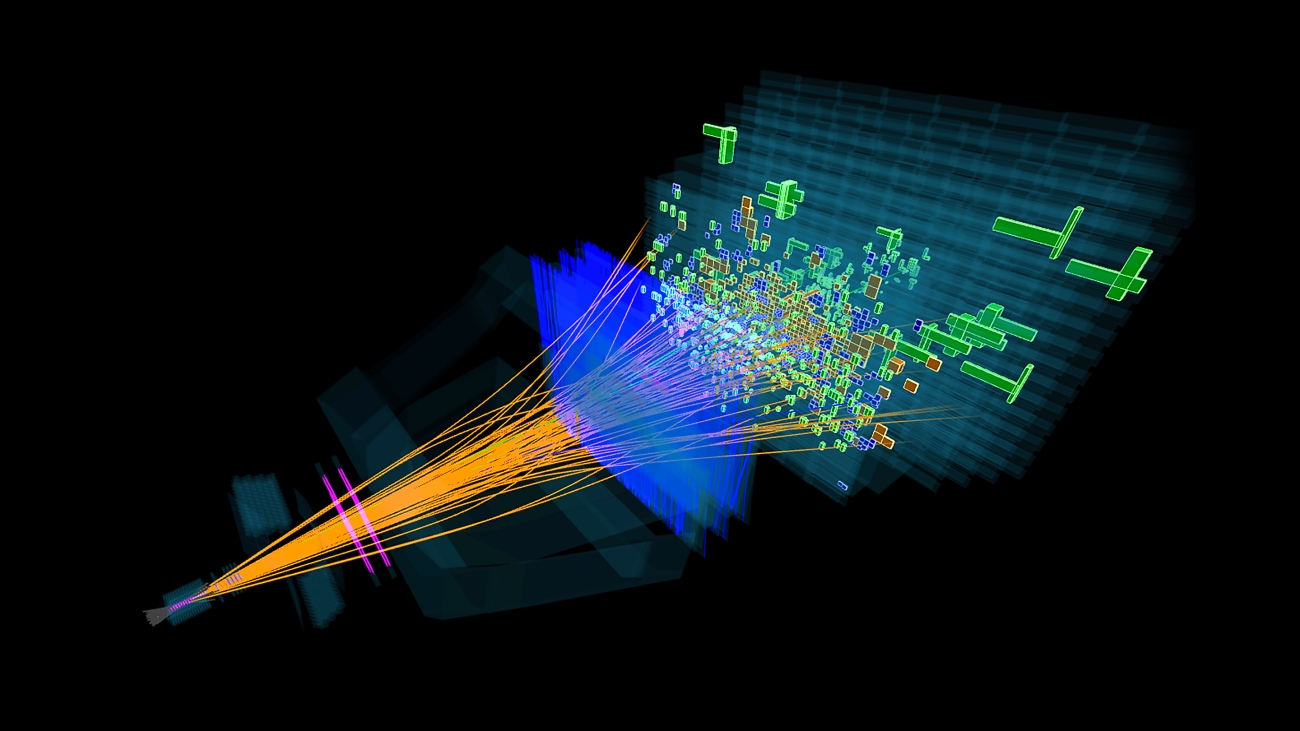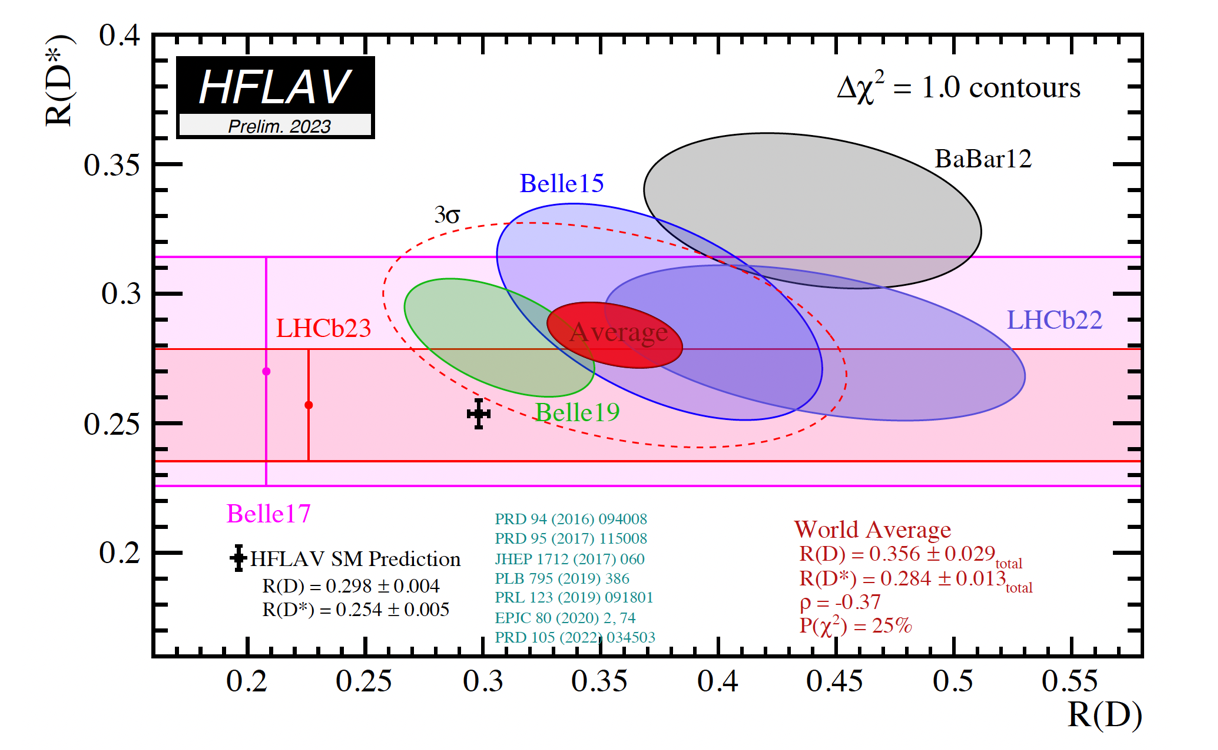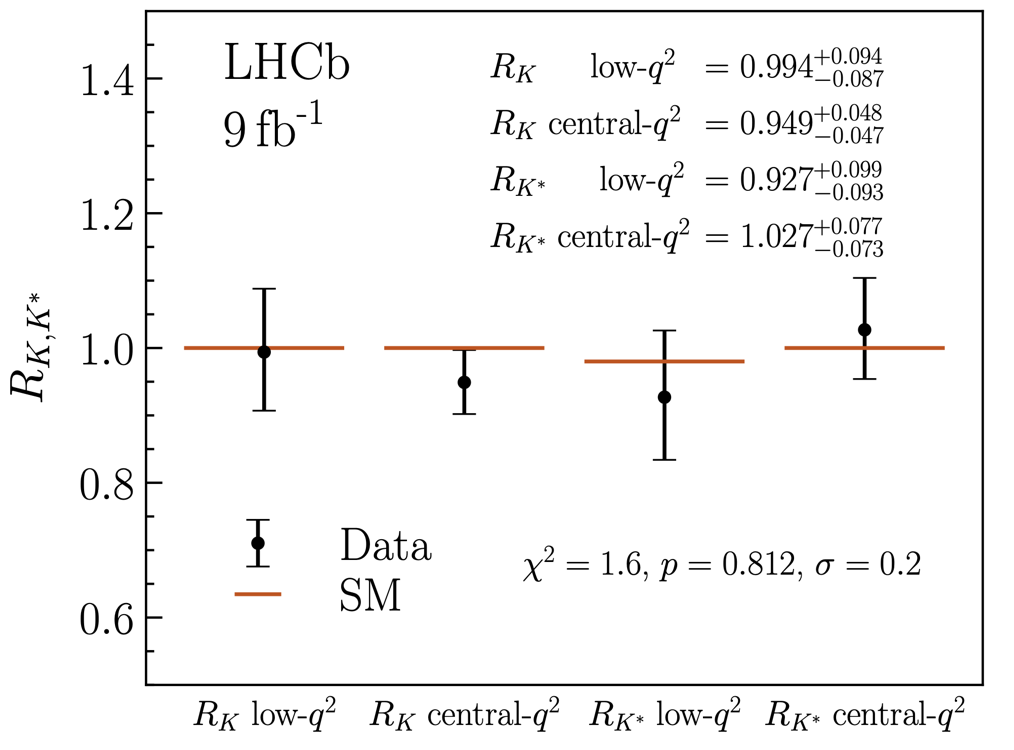B anomalies: hopes, disillusions, and future prospects.

Within the Standard Model (SM) the basic constituents of matter are the three "families" (two quarks and two leptons) with different quantum numbers, that completely determine the properties of these particles under the three fundamental forces relevant at the microscopic level (strong, weak and electromagnetic interactions). Ordinary matter consists essentially of particles of the first family (the u and d quarks, the electron and its corresponding neutrino). According to the SM, quarks and leptons of the second and third families are identical copies of those in the first family: they have exactly the same quantum numbers. The only differences are their heavier masses, resulting from their different interaction with the Higgs field. Why we have three nearly identical replicas of quarks and leptons (referred also as three "flavors" of quarks and leptons) and what is the underlying origin of their different masses (or the different couplings to the Higgs field) are among the big open questions in particle physics.
Given this structure, one of the key predictions of the SM is that the three charged leptons (e, μ, and τ) behave exactly in the same way, but for kinematical effects related to their different masses. Surprisingly enough, starting from 2012, measurements of the decay rates of b quarks into quarks of the second family (c or s) and a lepton pair, provided results that seemed to challenge this prediction. These results are generically denoted as the “B anomalies” after the B meson, which is the quasi-stable hadron that produces the decays under study. Moreover, given experiments seemed to indicate a different behavior depending on the family of the lepton involved, they are also denoted as hints of Lepton Flavor Universality (LFU) violation.
These measurements have been carried out by different experiments, analyzing two classes of processes: 1) decays of B mesons into charmed hadrons (i.e. quark transitions of the type b→c), denoted charged-current transitions, where the lepton pair emitted is formed by a charged lepton and a neutrino, and 2) decays of B mesons into strange hadrons (i.e. quark transitions of the type b→s), denoted neutral-current transitions, where the emitted lepton pair is a particle-antiparticle pair of two charged charged leptons.
The story of the charged-current transitions is the longest and the one which has seen more experiments involved, starting from Babar in 2012, followed by Belle and, in the last few years, with new results from LHCb. In these processes the anomaly is the behavior of τ lepton, which seems to be emitted 10%-20% more frequently than what predicted in the SM. The use of the conditional form is mandatory since detecting the (short-lived) τ lepton, accompanied by a neutrino that escapes detection, is notoriously difficult. This is why the low-statistics results by the B factories, which can profit from a cleaner experimental environment, are still competitive with the high-statistics results by LHCb, which has to fight severe backgrounds. This is also why the progress in this area is somewhat slow: after ten years from the initial Babar claim of a 3σ deviation from the SM, at present the combination of six results by these different experiments yield average values that still deviate from the SM predictions by about 3σ (see Fig. 1). We have more confidence in the results since there is overall good compatibility among different measurements. However, there is no single result that, taken alone, exhibits a statistically significant deviation. The good news here is that soon Belle-II will participate in the game, helping to shed light on the issue and, most importantly, contribute to a vital cross-check across different experimental techniques.

Fig. 1: Status of the charged-current LFU ratios R(D) and R(D*) as of March 2023.
The story of the neutral-current anomalies is the one that has raised strong hopes from 2014 till 2022, followed by the sudden “cold shower” of the latest LHCb results on RK and RK* announced in December 2022. Let’s start from the beginning: in this case we deal with very rare processes (transitions of the type b→sμ+μ- and b→se+e-); however, there are no neutrinos escaping detection. This is the reason why the LHCb experiment, with its high statistics, has had essentially no competitors so far. The first deviation from SM predictions in this class of processes appeared in 2013, but in this case it was not a test of universality: it was a deviation in the expected angular distribution of the muon pair in the hadronic transition B→ K*μ+μ-. This first anomaly was taken with some skepticism by a good fraction of the theory community, given the difficulty of obtaining a corresponding firm SM prediction: computing this observable requires a good control on the non-perturbative dynamics of the hadronic system. The situation started to change in 2014, when a first lepton universality ratio was measured, namely RK=Γ(B→Kμ+μ-)/Γ(B→Ke+e-), reporting a 2.6σ deviation from the SM prediction: RKexp = 0.745 ± 0.097 vs. RKSM =1. In this case the SM prediction is affected by a small theoretical uncertainty, given most of the hadronic uncertainties cancel in the ratio. The RK result was followed in 2017 by the measurement of RK* (i.e. the same lepton universality ratio, but for B→K* transitions), in two different kinematical regions, reporting deviations from the SM, of 2.5σ and 2.3σ respectively. These results were in exactly the same direction (i.e. a suppression compared to the SM expectation) as the others, and prompted some concrete hopes of having identified a real crack in the SM. The hope was justified both by the theoretical cleanliness of these observables, and by the emergence of a seemingly coherent picture: it was quite natural to link the pristine LFU ratios with other observables exhibiting deviations from the SM in b→sμ+μ- transitions (angular distributions and decay rates, which are affected by sizeable theory uncertainties but still indicate some level of disagreement from the SM), and possibly also the charged-current anomalies mentioned above.
The initial results on RK and RK* were based on run-1 data only. In 2021, an updated measurement of RK with the full statistics of up to run-2, had yielded the value RKexp = 0.846 ± 0.044: this was the first single result to exceed the threshold of a 3σ deviation from the SM in the saga of the B anomalies. However, the corresponding excitement didn’t last long: the combined re-analysis of RK and RK* announced in December 2022 resulted in revising this value to RKexp = 0.949 ± 0.047, which is consistent with the SM within 1σ. Actually this result is the most precise out of four different tests of lepton universality (in both B→K and B→K* transitions) reported by LHCb in December 2022, which are all consistent with the SM within 1σ (see Fig. 2). This thorough re-analysis led LHCb to identify a number of unexpected backgrounds, related in particular to the mis-identification of pions and kaons as electrons, which were underestimated in all their previous analyses.

Fig. 2: Measurements of the e/μ LFU rations reported by LHCb in December 2022.
The December 2022 results has certainly been a disappointing news in the perspective of finding a clear clue of physics beyond the SM. However, one should not overemphasize its negative aspects: a lot of progress has been made, both on the theory and on the experimental sides, and there are still various puzzling aspects in present data that need further investigation.
On the theoretical side, it has become clear that is entirely possible that physics beyond SM could manifest itself in these precision observables. Admittedly until a few years ago, testing e/μ universality was not considered among the most promising way to discover physics beyond the SM. Now we have realised that in well-motivated extensions of the SM, addressing some of its deepest open questions such as the origin of quark and lepton masses, sizeable deviations of e/μ universality in rare b decays can occur. This fact certainly calls for further experimental studies: while present data are fully compatible with the SM, they are also still fully compatible with a O(10%) violations of e/μ universality in b→s transitions, well above the 1% level corresponding to the theory uncertainty.
On the experimental side, it has become even more clear that these are difficult measurements, especially at hadron colliders. However, an incredible progress has been made in understanding the challenges and developing new analysis techniques. A key point to stress is that many channels remain to be explored (such as the LFU ratios in Bs→φ and Λb →pK transitions, or RK and RK* at large dilepton invariant mass): if there is a violation of universality of short-distance origin: this should manifest in all these observables at a similar level. Given the main challenge is the background, looking at different channels can be the key to improve the precision and get more confidence on future results.
Last but not least, we should not forget that there is still a 3σ deviation from the SM in charged currents. From a model-building point of view, this anomaly is even more interesting that the e/μ one, being larger in absolute size, a fact that can theoretically be attributed to the involvement of the third-generation lepton. In motivated models proposed to explain both anomalies (before the sudden drop of evidence of the neutral-current one), the charged-current anomaly has always been the leading effect, hence the lack of evidence for e/μ violations has a minor impact. If this anomaly were to be confirmed, it would unambiguously indicate new physics in the TeV scale domain, possibly within the direct reach of ATLAS and CMS. Of course the December 2022 news has been an important reminder, if necessary, that is premature to get too excited about 3σ deviations. However, as already mentioned, new results by different experiments can be expected in the near future on charged currents, and possibly also other rare b decays involving third-generation leptons, such as the b→sνν modes. These will be very helpful ingredients to shed light on this interesting puzzle.
Top image: Computer reconstruction of a collision event in the Large Hadron Collider beauty experiment. The collision produces a B meson, which subsequently decays into other particles that strike LHCb’s detectors.
